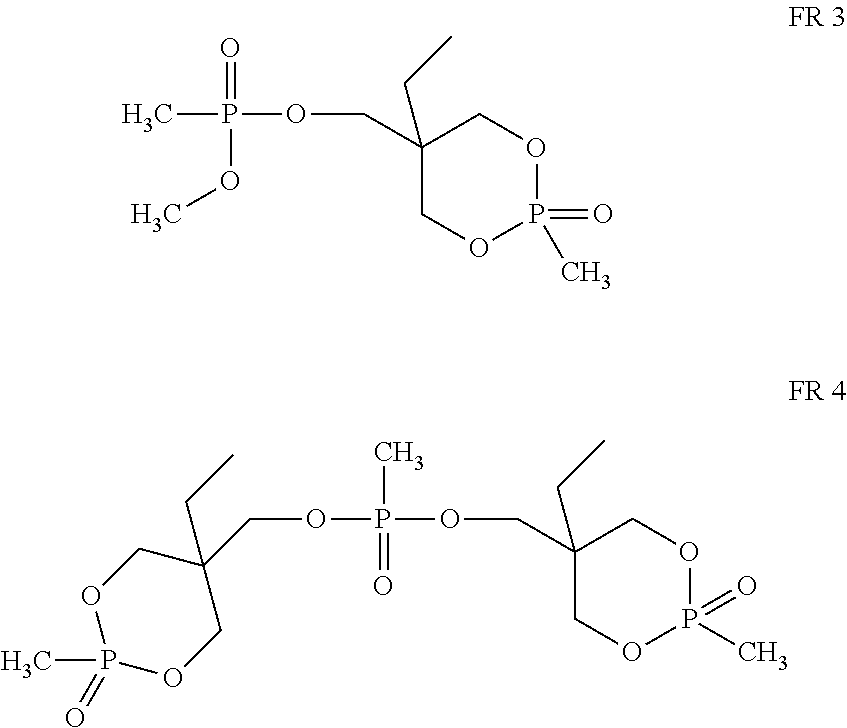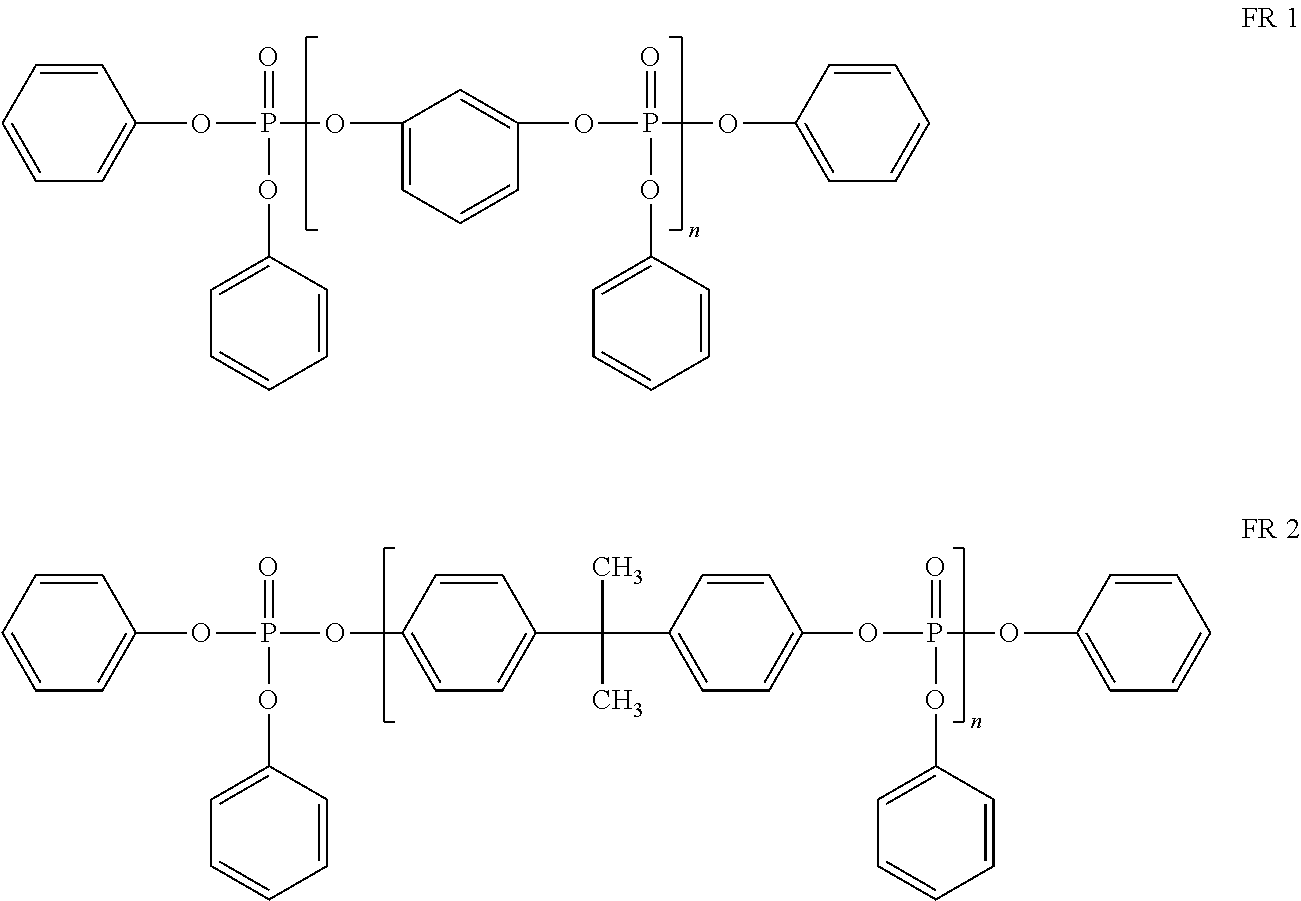Flame retardant poly(trimethylene terephthalate) compositions
a technology of trimethylene terephthalate and flame retardant polymer, which is applied in the direction of transportation and packaging, weaving, and group 5/15 element organic compounds, can solve the problems of inability to meet the requirements of use in some applications, inability to achieve the effect of reducing yellowness
- Summary
- Abstract
- Description
- Claims
- Application Information
AI Technical Summary
Benefits of technology
Problems solved by technology
Method used
Image
Examples
examples
[0031]In the following examples, all parts, percentages, etc., are by weight unless otherwise indicated.
Ingredients
[0032]The poly(trimethylene terephthalate) (PTT) used in the examples was SORONA®“semi-bright” (0.12 weight percent titanium dioxide) polymer available from E.I. du Pont de Nemours and Company (Wilmington, Del.).
[0033]PTT polymer pellets containing 0.12% titanium dioxide and with an intrinsic viscosity of 1.02 dL / g was acquired from the E.I. DuPont Company (Wilmington, Del.). PTT pellets were dried for 12 hours under a nitrogen atmosphere at reduced pressure (25 inches of vacuum) and 120° C. Under these conditions the pellet moisture content is reduced to less than 40 ppm. The dried pellets were used in the extrusion process described below.
Fire Retardants
[0034]Four commercially available fire retardants were evaluated, and are shown in the structures below. Phosphate ester fire retardant that is made primarily of the structure shown as FR 1 can...
PUM
| Property | Measurement | Unit |
|---|---|---|
| Percent by mass | aaaaa | aaaaa |
| Percent by mass | aaaaa | aaaaa |
| Percent by mass | aaaaa | aaaaa |
Abstract
Description
Claims
Application Information
 Login to View More
Login to View More - R&D
- Intellectual Property
- Life Sciences
- Materials
- Tech Scout
- Unparalleled Data Quality
- Higher Quality Content
- 60% Fewer Hallucinations
Browse by: Latest US Patents, China's latest patents, Technical Efficacy Thesaurus, Application Domain, Technology Topic, Popular Technical Reports.
© 2025 PatSnap. All rights reserved.Legal|Privacy policy|Modern Slavery Act Transparency Statement|Sitemap|About US| Contact US: help@patsnap.com



